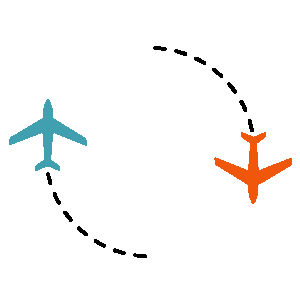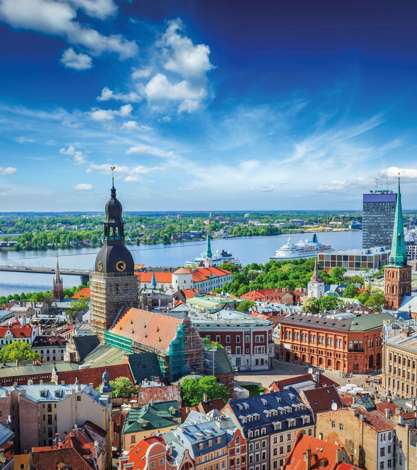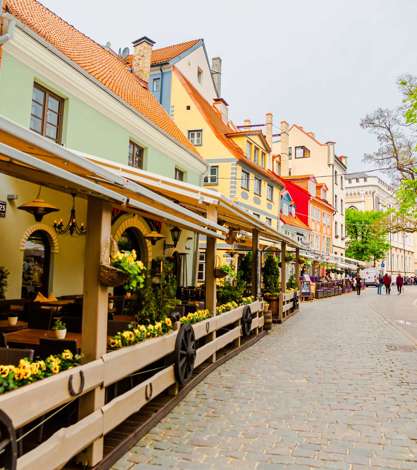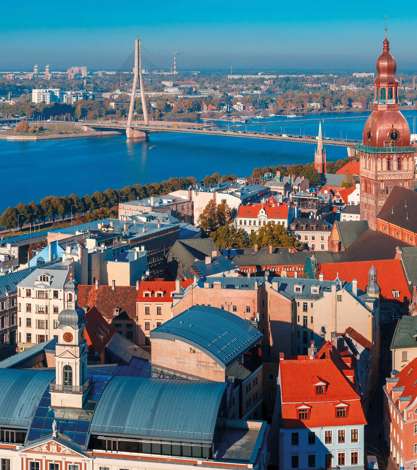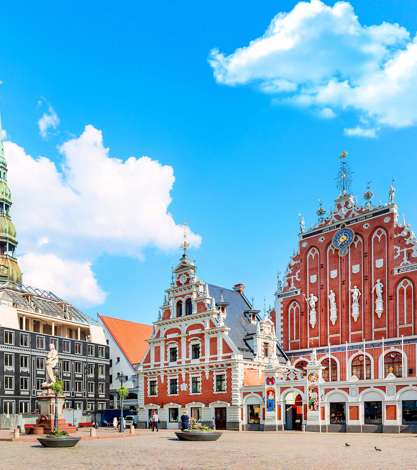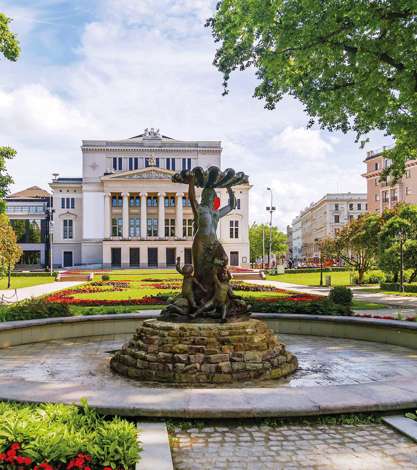Tour Latvia
The Essence of Latvia
With Riga its only sizeable city, Latvia’s landscape of beaches and forests is punctuated with small towns; its architecture evoking the past in art nouveau elegance, wooden houses, castle ruins and medieval spires; its calendar filled with festivals.
Why choose a tour in Latvia?
With a history of conquests and occupations from the 16th to 20th centuries, Latvia has variously been part of Teutonic, Swedish and Russian territories, finally achieving its freedom with the collapse of the Soviet Union in 1991. It is a testament to the Latvian spirit that the country’s culture survived.
The showcase of its art and architecture is the capital, Riga, where goblins and griffins are among the folklore images carved into grand façades, church spires mark the skyline of the medieval Old Town, and an elegant art-nouveau enclave earned it the epithet ‘the Paris of the Baltics’.
Straddling the Daugava River, the city is studded with the monuments of its past. The painstakingly restored Rundale Palace extends its opulence into fabulous Versailles-style gardens, and boasts a ghost of a tragic White Lady. The Dome Cathedral, the largest religious building in the Baltics, displays its centuries of alterations with Romanesque, Gothic, and Baroque styles; and the ‘Corner House’ KGB headquarters is now the Museum of the Occupation of Latvia, revealing the horrors the Soviet era.
While these form the backdrop to the Baltics’ largest city, they are at odds with the ambiance of it. Latvia’s ‘live for the moment’ ethos has survived along with its heritage, most notable in its feast of festivals, from midsummer celebrations to rock music extravaganzas, opera, folk song and dance events, art exhibitions, craft fairs, and an eight-week, open-air concert program.
With a third of Latvia’s population living in Riga, the rest of the country is a pristine patchwork of hillside pastures, lowland fields, meandering rivers, serene lakes, and thousands of forested acres.
Jules Verne’s Latvian discovery crosses the country from border to border, to team with its Baltic neighbours, Lithuania and Estonia; and crosses the Gulf of Finland to Helsinki.
When to go on Latvia holidays
Winter temperatures frequently fall below freezing; spring arrives, cold and quite late, in early April, but warms up quickly to around 18° by late May; summers (June to August) generally average 23°, but occasionally pick up warm winds from the southeast, to peak at 30°+; and autumn cools to around 12°.
Jules Verne has departures from April to early October, so you can choose the season that suits you best.
Who are Latvia tours suited to?
Touring through Latvia is a leisurely interlude, through gorgeous scenery, to its gregarious capital. If you have a particular penchant for art, crafts, music, or local folklore, check the country’s extensive array of festivals and festivities, to see if one can match your tour date with your special interest.
Why book Latvia tours with Jules Verne?
With 45 years’ experience and a passion for creating extraordinary adventures, Jules Verne visits iconic landmarks and lesser-known sites, with expert tour guides who share their local knowledge, and show you hidden gems. Special touches on our Latvian journey could include a short recital at Riga’s cathedral, its 19th-century organ boasting 6,718 pipes, or cocktails at the city’s renowned Black Magic Bar.
Our guided tours to Latvia are ABTA and ATOL protected, and we offer a 100% price guarantee, so you can book with complete confidence.
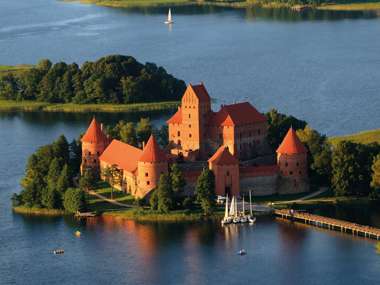
Baltic Capitals
Four countries, four capitals, and seven centuries of architectural styles, in their street-scenes and monuments, form the focus of this intriguing Baltics tour, as we travel to Lithuania, Latvia and Estonia, and take the ferry across the Gulf for a final day in Finland
